Filters: Department: "Neurosurgery" School Or College: "School of Medicine" Collection: "ir_uspace" Type: "Text"
| Creator | Title | Description | Subject | Date | ||
|---|---|---|---|---|---|---|
| 1 |
 |
Couldwell, William T. | The frontotemporal (Pterional) approach: an historical perspective | The frontotemporal, so-called "pterional" approach has evolved with the contribution of many neurosurgeons over the past century. It has stood the test of time and been the most commonly used transcranial approach in neurosurgery. In its current form, drilling the sphenoid wing as far down as the su... | 2012-01-01 | |
| 2 |
 |
Dailey, Andrew T. | Guideline update for the performance of fusion procedures for degenerative disease of the lumbar spine. Part 3: Assessment of economic outcome | A comprehensive economic analysis generally involves the calculation of indirect and direct health costs from a societal perspective as opposed to simply reporting costs from a hospital or payer perspective. Hospital charges for a surgical procedure must be converted to cost data when performing a c... | 2014-01-01 | |
| 3 |
 |
Dailey, Andrew T. | Guideline update for the performance of fusion procedures for degenerative disease of the lumbar spine. Part 4: Radiographic assessment of fusion status | The ability to identify a successful arthrodesis is an essential element in the management of patients undergoing lumbar fusion procedures. The hypothetical gold standard of intraoperative exploration to identify, under direct observation, a solid arthrodesis is an impractical alternative. Therefore... | 2014-01-01 | |
| 4 |
 |
Dailey, Andrew T. | Guideline update for the performance of fusion procedures for degenerative disease of the lumbar spine. Part 9: Lumbar fusion for stenosis with spondylolisthesis | Patients presenting with stenosis associated with a spondylolisthesis will often describe signs and symptoms consistent with neurogenic claudication, radiculopathy, and/or low-back pain. The primary objective of surgery, when deemed appropriate, is to decompress the neural elements. As a result of t... | 2014-01-01 | |
| 5 |
 |
Dailey, Andrew T. | Guideline update for the performance of fusion procedures for degenerative disease of the lumbar spine. Part 7: Lumbar fusion for intractable low-back pain without stenosis or spondylolisthesis | Establishing an appropriate treatment strategy for patients presenting with low-back pain, in the absence of stenosis or spondylolisthesis, remains a controversial subject. Inherent to this situation is often an inability to adequately identify the source of low-back pain to justify various treatmen... | 2014-01-01 | |
| 6 |
 |
Dailey, Andrew T. | Guideline update for the performance of fusion procedures for degenerative disease of the lumbar spine. Part 2: Assessment of functional outcome following lumbar fusion | Assessment of functional patient-reported outcome following lumbar spinal fusion continues to be essential for comparing the effectiveness of different treatments for patients presenting with degenerative disease of the lumbar spine. When assessing functional outcome in patients being treated with l... | 2014-01-01 | |
| 7 |
 |
Dailey, Andrew T. | Guideline update for the performance of fusion procedures for degenerative disease of the lumbar spine. Part 8: Lumbar fusion for disc herniation and radiculopathy | Patients suffering from a lumbar herniated disc will typically present with signs and symptoms consistent with radiculopathy. They may also have low-back pain, however, and the source of this pain is less certain, as it may be from the degenerative process that led to the herniation. The surgical al... | 2014-01-01 | |
| 8 |
 |
Dailey, Andrew T. | Guideline update for the performance of fusion procedures for degenerative disease of the lumbar spine. Part 6: Discography for patient selection | Identifying the etiology of pain for patients suffering from chronic low-back pain remains problematic. Noninvasive imaging modalities, used in isolation, have not consistently provided sufficient evidence to support performance of a lumbar fusion. Provocative testing has been used as an adjunct in ... | 2014-01-01 | |
| 9 |
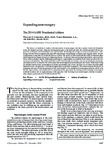 |
Couldwell, William T. | Expanding neurosurgery | The history of medicine is replete with innovations in neurosurgery that have spurred further developments across the medical spectrum. Surgeons treating pathologies in the head and spine have broken ground with new approaches, techniques, and technologies since ancient times. Neurosurgeons occupy a... | 2014-01-01 | |
| 10 |
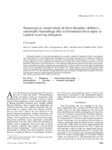 |
Garber, Sarah | Neurosurgical complications of direct thrombin inhibitors - catastrophic hemorrhage after mild traumatic brain injury in a patient receiving dabigatran | Dabigatran etexilate is an oral anticoagulant that acts as a direct, competitive thrombin inhibitor. Large randomized clinical trials have shown higher doses of dabigatran (150 mg taken twice daily) to be superior to warfarin in terms of stroke and systemic embolism rates in patients with nonvalvula... | 2012-01-01 | |
| 11 |
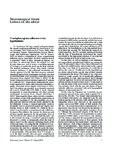 |
Couldwell, William T. | Response to Craniopharyngioma adherence to the hypothalamus | To The Editor: We have viewed with great interest the special supplement published by Neurosurgical Focus in January 2013 (Neurosurgical Focus, Video Atlas of Operative Surgery: Intraventricular Lesions: Microscopic and Endoscopic Approaches, Vol 34: January 2013) in which a compilation of videos de... | 2014-01-01 | |
| 12 |
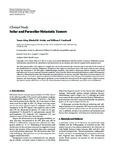 |
Couldwell, William T. | Sellar and parasellar metastatic tumors | The sellar and parasellar (SPS) region is a complex area rich in vital neurovascular structures a first manifestation of a systemic malignancy. Metastases to this region are rare; breast cancer is the most common source among those that metastasize to the SPS region. Ophthalmoplegia, headache, retro... | 2012-01-01 | |
| 13 |
 |
Jensen, Randy Lynn | Treatment-related brain tumor imaging changes: so-called "pseudoprogression" vs. tumor progression: Review and future research opportunities | Background: Glioblastoma multiforme (GBM) has a dismal prognosis despite aggressive therapy. Initial diagnosis and measurement of response to treatment is usually determined by measurement of gadolinium-enhanced tumor volume with magnetic resonance imaging (MRI). Unfortunately, many GBM treatment mo... | 2013-01-01 | |
| 14 |
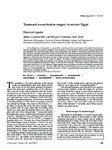 |
Couldwell, William T. | Transnasal excerebration surgery in ancient Egypt: Historical vignette | Ancient Egyptians were pioneers in many fields, including medicine and surgery. Our modern knowledge of anatomy, pathology, and surgical techniques stems from discoveries and observations made by Egyptian physicians and embalmers. In the realm of neurosurgery, ancient Egyptians were the first to elu... | 2012-01-01 | |
| 15 |
 |
Couldwell, William T. | Transtemporal approach to the removal of a lateral pontine tumor | This video demonstrates a very useful trajectory to a pontine lesion. A 68-year-old man presented with tongue numbness and weakness. The approach used was a transtemporal presigmoid retrolabyrinthine approach to enable an orthogonal trajectory to the lateral pons. Following the transtemporal opening... | 2014-01-01 | |
| 16 |
 |
Couldwell, William T. | Intracranial hypotension as a complication of lumbar puncture prior to elective aneurysm clipping | Background: Lumbar dural defects are an uncommon but important cause of persistent intracranial hypotension in the neurosurgical population. We present a case of intracranial hypotension after elective craniotomy due to a lumbar puncture performed 3 weeks earlier. Case Description: A 55‑year‑old... | 2014-01-01 | |
| 17 |
 |
Couldwell, William T. | Intracranial hypotension in the setting of concurrent perineural cyst rupture and subarachnoid hemorrhage | Although most patients with intracranial hypotension typically present with headaches, the rest of the clinical spectrum is characteristically non-specific and often quite variable. In a patient with concurrent pathologies that can produce a similar clinical picture, a high index of suspicion must b... | 2013-01-01 | |
| 18 |
 |
Couldwell, William T. | Intraoperative aneurysmal subarachnoid hemorrhage after rupture of a previously undiagnosed intracranial aneurysm during Chiari decompression: case report and literature review | Type 1 Chiari malformation occurs when caudal displacement of cerebellar tonsils below the level of foramen magnum obstructs the normal flow of cerebrospinal fluid (CSF) between the cranial and spinal spaces, a condition that often needs surgical decompression to restore normal CSF circulation. Abru... | 2014-01-01 | |
| 19 |
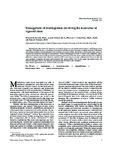 |
Couldwell, William T. | Management of meningiomas involving the transverse or sigmoid sinus | Meningiomas that invade the transverse or sigmoid sinuses are uncommon tumors that are challenging to treat surgically. Although the risk of recurrence is associated with the extent of resection, complete removal of meningiomas in these locations must be balanced with avoidance of venous outflow obs... | 2013-01-01 | |
| 20 |
 |
Couldwell, William T. | Efficacy of clip-wrapping in treatment of complex pediatric aneurysms | Purpose: Pediatric aneurysms (PAs) are distinct from their adult counterparts with respect to typical location, aneurysm type, and known predisposing risk factors. Many strategies have been employed to treat PAs, but, although it has been used frequently in adults, clip-wrapping in pediatric patient... | 2012-01-01 | |
| 21 |
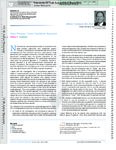 |
Couldwell, William T. | Giant pituitary tumor combined approach | Nishioka et al. have provided a review of 29 patients with large pituitary adenomas who underwent surgery through a simultaneous transsphenoidal and transcranial approach at their institution during a 7-year period. Large adenomas with hourglass constriction, complex lobulations, and asymmetric exte... | 2012-01-01 | |
| 22 |
 |
Dailey, Andrew T. | Lateral mass screw fixation in the cervical spine | To The Editor: We read with interest the article by Kawabata et al.15 (Kawabata S, Watanabe K, Hosogane N, et al: Surgical correction of severe cervical kyphosis in patients with neurofibromatosis Type 1. Report of 3 cases. J Neurosurg Spine 18:274-279, March 2013). Reconstructive spinal surgery has... | 2014-01-01 | |
| 23 |
 |
Patel, Bhupendra C. | Lateral orbital wall approach to the cavernous sinus: laboratory investigation | Object. Lesions of the cavernous sinus remain a technical challenge. The most common surgical approaches involve some variation of the standard frontotemporal craniotomy. Here, the authors describe a surgical approach to access the cavernous sinus that involves the removal of the lateral orbital wal... | 2012-01-01 | |
| 24 |
 |
Schmidt, Meic H. | Isolated intramedullary neurosarcoidosis of the thoracic spine: case report and review of the literature | Sarcoidosis can involve the central nervous system in approximately 5-15% of cases. Any part of the nervous system can be involved, so presentation can be quite varied. Isolated disease of the spinal cord is even less common and reports are limited to single cases and small series. Although in the s... | 2012-01-01 | |
| 25 |
 |
Schmidt, Meic H. | Is vertebral augmentation the right choice for cancer patients with painful vertebral compression fractures? | Cancer-related fractures of the spine are different from osteoporotic ones, not only in pathogenesis but also in natural history and treatment. Higher class evidence now supports offering balloon kyphoplasty to a patient with cancer, provided that the pain is significant in intensity, has a position... | 2012-01-01 |
